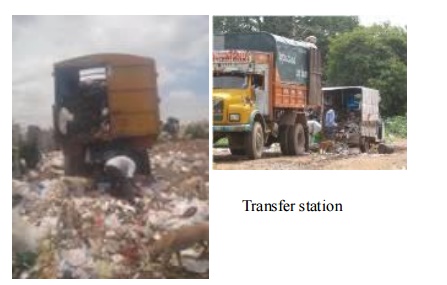Chapter: Civil : Municipal Solid Waste Management : Collection And Transfer
Types of Municipal Solid Waste Transfer Station

TRANSFER STATION
The transfer of waste is frequently accompanied by
removal, separation or handling of waste. In areas, where wastes are
not already dense,
they may be
compacted at a transfer station. The technical limitations of smaller
collection vehicles and
the low hauling cost of solid waste, using larger vehicles, make a
transfer station viable. Also,
the use of transfer station proves reasonable, when there is a need for vehicles servicing a collection
route to travel shorter distances, unload and return quickly to their primary
task of collecting the waste.
Limitations
in hauling solid wastes are the main factors to be considered, while
evaluating the use of transfer stations. These include the additional
capital costs of purchasing trailers, building transfer stations and the extra
time, labour and energy required for transferring wastes from collection truck
to transfer trailer.
1 Types
Depending
on the size, transfer stations can be either of the following two types:
(i)
Small to medium transfer stations: These are
direct-discharge stations
that provide
no intermediate waste
storage area. The
capacities are generally small
(less
than 100 tonnes/day) and medium (100 to 500 tonnes/day). Depending on weather,
site aesthetics and environmental concerns, transfer operations of this size
may be located either indoor or outdoor. More complex small transfer stations
are usually attended during hours of operation
and may include some simple waste
and materials processing facilities. For example, it includes a
recyclable material separation and
processing centre. The required overall
station capacity (i.e., the
number and size
of containers) depends on the
size and population density of the area served and the frequency of
collection.
(ii) Large transfer stations: These are
designed for heavy commercial use by private and municipal collection vehicles.
The typical operational procedure for a larger station is as follows:
when collection vehicles arrive at the site, they
are checked in for billing, weighed and directed to the appropriate dumping
area;
![]()
collection vehicles travel to the dumping area and
empty the wastes into a waiting trailer, a pit or a platform;
![]()
after unloading, the collection vehicle leaves the
site, and there is no need to weigh the departing vehicle, if its weight
(empty) is known;
![]()
Related Topics